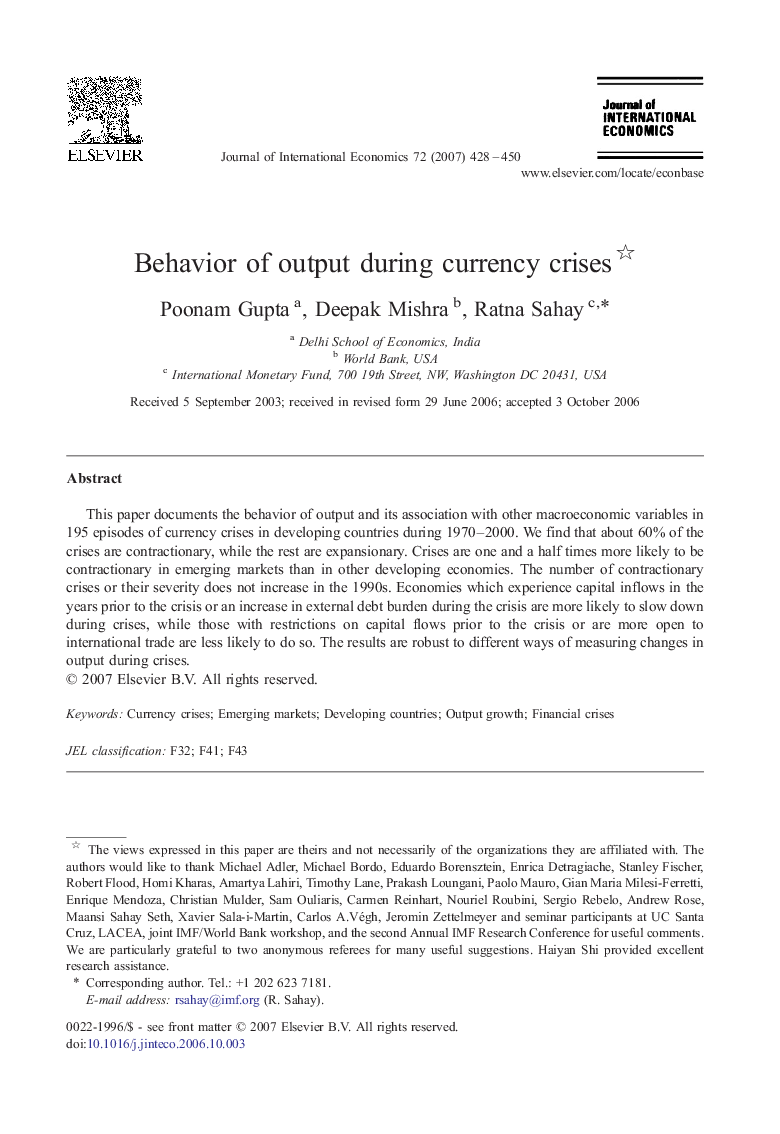| Article ID | Journal | Published Year | Pages | File Type |
|---|---|---|---|---|
| 963198 | Journal of International Economics | 2007 | 23 Pages |
Abstract
This paper documents the behavior of output and its association with other macroeconomic variables in 195 episodes of currency crises in developing countries during 1970-2000. We find that about 60% of the crises are contractionary, while the rest are expansionary. Crises are one and a half times more likely to be contractionary in emerging markets than in other developing economies. The number of contractionary crises or their severity does not increase in the 1990s. Economies which experience capital inflows in the years prior to the crisis or an increase in external debt burden during the crisis are more likely to slow down during crises, while those with restrictions on capital flows prior to the crisis or are more open to international trade are less likely to do so. The results are robust to different ways of measuring changes in output during crises.
Related Topics
Social Sciences and Humanities
Economics, Econometrics and Finance
Economics and Econometrics
Authors
Poonam Gupta, Deepak Mishra, Ratna Sahay,
